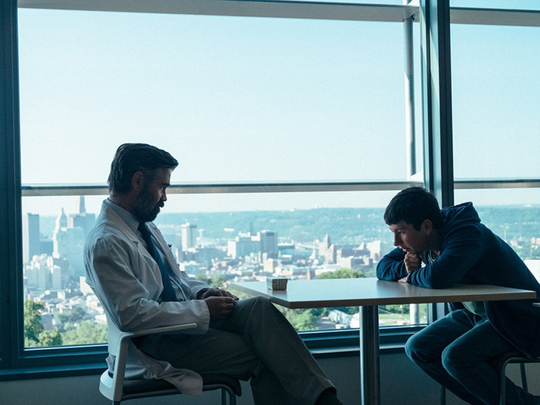
The self-assured hubris of a man who likes to play God for a living is challenged when he has to make an innocent pay for his crimes — the central conflict of Greek auteur Yorgos Lanthimos’ (Dogtooth, The Lobster) chilling film, Killing of a Sacred Deer, is a metaphorical allegory borrowed from the Greek play Iphigenia in Aulis.
Part-horror, part-thriller and part-morality play, the justice system in the world of Killing of a Sacred Deer terrifyingly holds a mirror to our own, where the burden of the mistakes of the powerful are borne by the sacrifices of the powerless innocents. Like any of Lanthimos’ previous work, it’s not an easy watch, and yet we’re unable to pull our eyes away from the screen.
Colin Farrell and Nicole Kidman play husband and wife Steven and Anna Murphy — him a cardiothoracic surgeon and her an ophthalmologist. They have a perfect family — with daughter Kim (Raffey Cassidy) and son Bob (Sunny Suljic) — and live in a perfect home in the suburbs. And while all seems well, there’s an underlying tension, taut and ready to snap, that threatens to topple everything, because Steven is hiding a secret.
When we first see Steven meet surreptitiously with the teenage boy Martin (Barry Keoghan), a sense of dread immediately fills the air. They only speak for a few minutes, extremely polite but also uncomfortably intimate, and then set a date and time for their next meeting. The two continue to meet in secret until Martin starts showing up at Steven’s workplace — a stark and cold hospital — unannounced.
Steven reacts to this by inviting the boy to his idyllic home and introducing him to his family. And things continue to move smoothly and perfectly — until it doesn’t. Steven’s youngest child, Bob, find himself paralysed one morning, and the doctors at Steven’s hospital are stumped as to why the perfectly healthy child can’t move. From here, things escalate with every passing scene, the pitch and tone rising in horrifying octaves, until the eerie flatlining of the second last scene.
The film is a lesson in mood-building. The grey palette of the shots combined with the comically angular and straight-delivered speech by the actors, as if they were actually in a play, and the way Lanthimos often sets his characters against vast landscapes, is all a massive set-up _ a slow waiting game until a splash of colour can only mean one thing, impending death.
However, the film can also take a physical toll on the viewer. The cold and steely atmosphere combined with the increasing restlessness of the characters and the horrors that follow are almost impossible to suffer in the uncomfortable seats of a theatre.
Kidman and Farrell, masters of their craft, are used effectively here. Removed from their Hollywood roots, the two are given the freedom to unlock something perversely sinister within them, and the result is stunning and horrifying at the same time. Newcomer Keoghan as the conflicted and vengeful Martin is even more convincing and holds his own against the two greats.
While at some times, the transfer of an age-old mythological conundrum into a modern-day situation seems forced, Lanthimos’ Killing of a Sacred Deer is otherwise a successful observation of the follies of human conceit and the inability to take responsibility for one’s actions. But if I could do it again, I would save this watch for the comforts of my own home.












